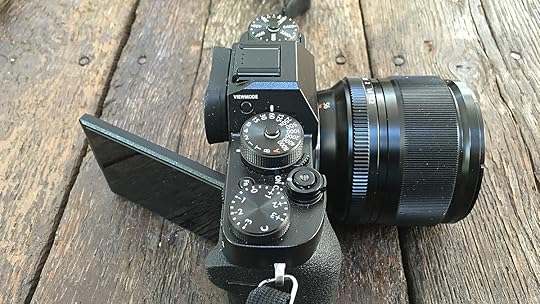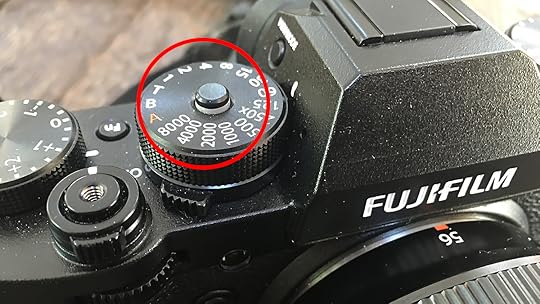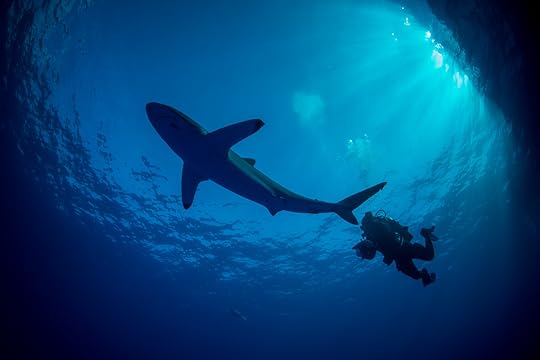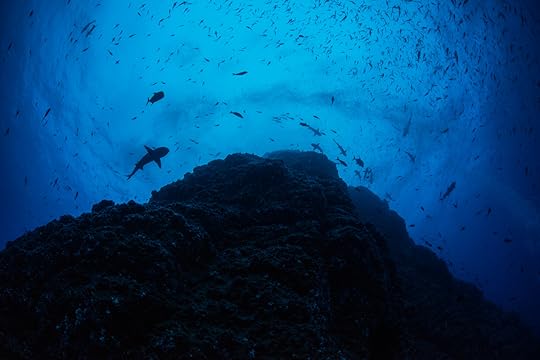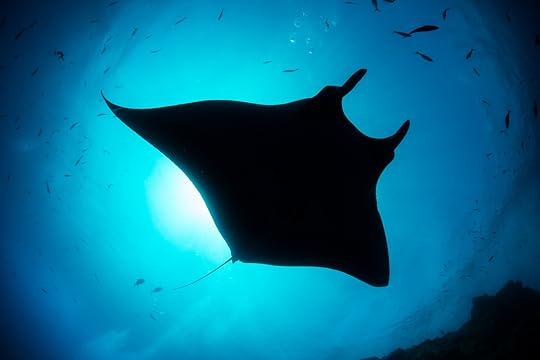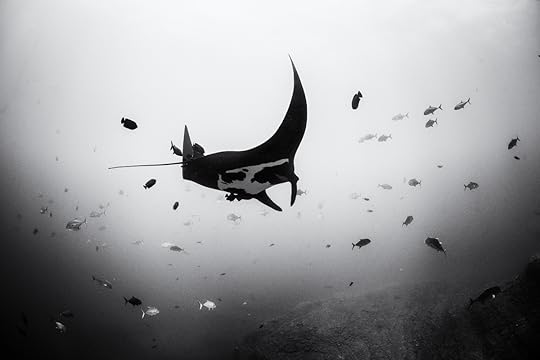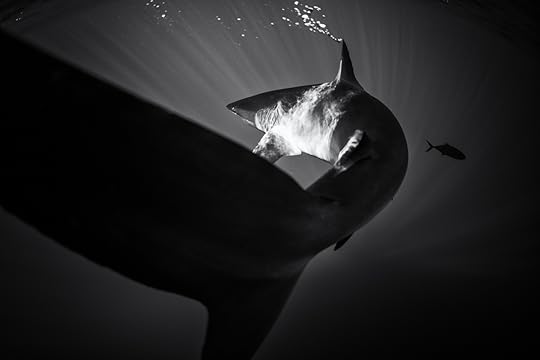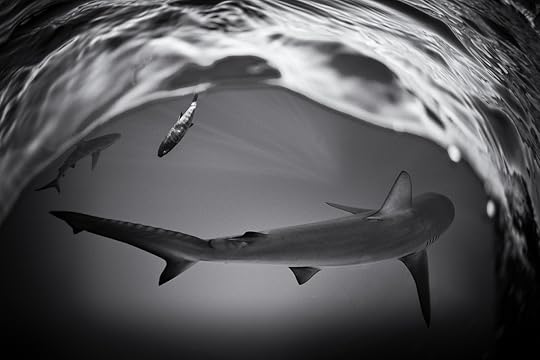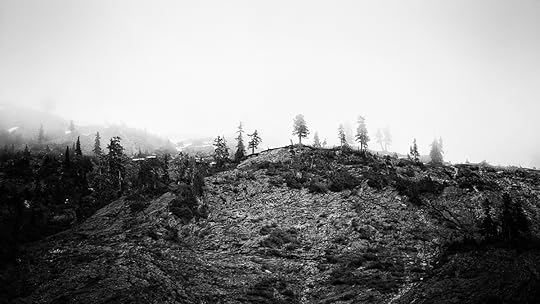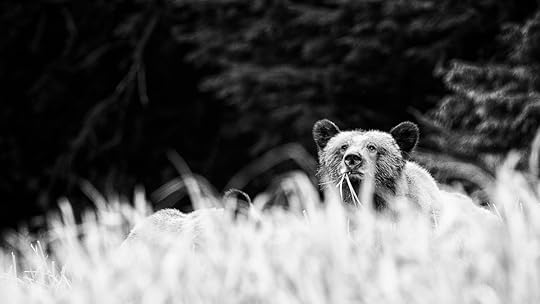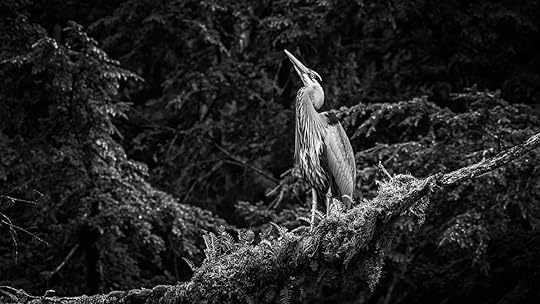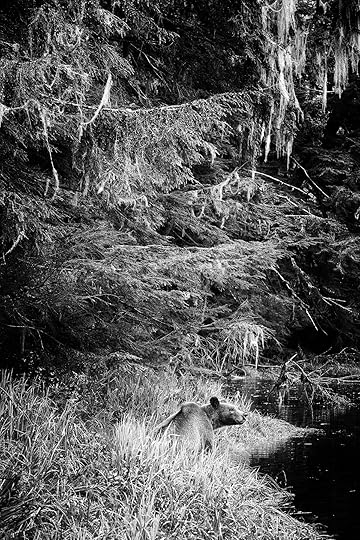David duChemin's Blog, page 8
August 2, 2016
A Little More Defiance, Please.
One of the most heartbreaking things I hear from photographers, when I ask why they do not share their work, is this: who am I to put my work out there? Who wants to hear what I have to say? It’s heartbreaking for so many reasons, not the least of which is how often I hear it. From photographers, from writers, from almost anyone that has finally come to grips with their desire, their need, to make something, I hear it in as many different ways as there are people to say it. What they are collectively saying is that they don’t matter. Or, perhaps worse, they know they matter and they’re just plain scared. Scared of rejection. Scared of the vulnerability that must happen when we make and share something that matters to us, into which we’ve poured a part of our soul. Scared others will not so much dislike our work – that happens – but that they won’t care enough to even register an opinion. We worry that if our art is unimportant or unnoticed, we must be too.
When did we become so timid? How many voices have we listened to that we finally gave in and swallowed the lie that unless what we share is better than others we shouldn’t share it at all? Who told us that sharing our art was first about the expectations of the people who will experience it and not first about the simple need to speak, to create, to do?
We have been robbed of something beautiful and fundamentally human: the freedom to create and add whatever we create, however good or bad in the eyes of others, to the great tapestry. And now, in a culture where the most common metrics of individual worth are likes and hearts – the approval of others – I worry we’re heading further from home, from the safe place in which we create for the joy of creation, and share our work as a gift, not a way to test our value.*
Someone told me recently she was a coward, as though that were an inescapable state of being. We are all afraid. But fear is not what we are. Fear is only a voice. We can listen to it, we can learn from it, we can let it point us in the direction of important (read: scary) work. But we need not obey it. When did we all become so g*d-damn obedient? When did we start taking no for an answer when we used to be so good at taking the cookie from the cookie jar and pressing the button we were told not to press, just to see what happens? Someone used to insult us and we’d hurl back: sticks and stones may break my bones but words will never hurt me. It was bullshit, of course. Words hurt more. The scars go much deeper and stay much longer. But at least we were defiant.
The art spirit is a lot of things. One of them is defiant. That word has been rattling around in my brain a lot lately, settling in to some old wounds and helping me find new freedoms. It’s another way of looking at what I’ve long called this beautiful anarchy. Not because there’s value in rebellion for rebellion’s sake but because there is danger in being obedient for the sake of obedience. Conformity pushes the human soul in the wrong direction; it only works because it feels safe. Just keep your head down, blend in, it’ll all be OK. Again: bullshit.
The human heart longs to be loved and accepted. But it’s hollow unless we are loved and accepted for who we truly are. That means standing out – not for the sake of standing out but for the sake of being unashamedly you. Just you. Cracks and all. The cracks let the light in. But they also let it out. Honour the cracks. Uncover them. Let those cracks be the way you pour your soul into your work.
*Disclaimer One: I have been critical of social media lately, more so than usual. I’m not being negative; I’m trying to be unmistakeably positive about the things that matter most: the artist that I see in all of you, and the artist** that I hope is in me. Critical thinking is a good thing, especially about something I worry threatens our last threads of courage, something I worry might be pushing us all towards homogeny. But let me be clear: it’s not the technology, it’s the way we use it that either serves our humanity, deepens connections, and allows us to share like never before, or we use it to compare ourselves, to see if we measure up, and on a stage of millions that’s a frightening prospect if what we’re hoping for is to end up near the top. It is enough that we just find the place that is uniquely ours.
**Disclaimer Two: When I use the words art and artist I mean them in the least precious way possible. There is no implication that because I create art it is necessarily good art, important art, or anything more than relentlessly practicing my craft with increasing vulnerability, discipline, passion, and curiosity. It is art, not Art, if you catch my drift.
Share this Post, Share the Love.
July 22, 2016
Lens Caps
I’m not sure whether anyone needs to hear this or I just needed to say it. But it’s starting to feel like the spirit of our current time is fear and fear often leads us to build walls around our hearts, to do what we can to protect ourselves. And the thing that was meant to protect us quickly becomes the thing that binds us. Incarcerates our hearts. Makes misers of once generous spirits. Have a good weekend, friends.
I object to lens caps on a metaphorical level. Symbols of our need to protect the fragile parts of ourselves, they’re better at obscuring our vision than they are at keeping the glass intact. Besides, these lenses are more resilient than we believe them to be. So are we.
How many moments do we miss by fumbling for these damn things.How much light do we shut out.
We’re so fucking careful. We could stand to be a little more reckless, to give fewer damns about the water spots and the dust and just really see these moments all the way through before slamming that black plastic back on. Safe. But blind.
My biggest fear is not getting to the end of this Assignment with my lens scarred and dinged, my lens caps long lost or gathering in the bottom of my bag with the dust and sand from that one beach in Thailand, sand that no “real” photographer would let near his cameras but we were too busy savouring life, as Riboud said, at one hundredth of a second, to really care.
No, my biggest fear is finding that I’ve protected myself from the very things that would give depth and passion and meaning to the one photograph I really wanted to make with my life.
Besides, I love the way the little flaws flare out with all the colours of the spectrum when the light hits the front of the lens. And it does hit the front of the lens, more often than not these days, because there’ll be time enough to look shadow-ward. At the end.
I want to look relentlessly, with my eyes always open, my lens uncovered. I want to peer into places that make me uncomfortable. Places that make me dizzy with delight. Places that challenge the way I see the world. I want an unflinching gaze. I want to be that person with the wild look in his eye because he sees something he’s never seen before and it enlarges his heart and his imagination past the point he ever dreamed possible. I want to see it all.
Share this Post, Share the Love.
July 21, 2016
Cath(art)ic
What if art has always been, in some deeply human way, cathartic for us? What if we used art as a way to respond to the heartache and the fear and the thoughts and emotions we had no other way to explore or express?
What if we once responded to the world in the medium that worked best for us; the songwriter moved to song because she was so pissed off by something, the photographer moved to make photographs because he saw something that moved him or aroused his curiosity, or the sculptor or playwright or painter – whatever – did what they did because it was the most powerful way they could find to be in the world and deal with the uncontrollable, the beautiful, the frustrating, the profound injustice?
What if art – the best of it – the stuff the still moves us, like (in my case) Picasso’s Guernica, served the function of a release, the pressure finally building until our heart and minds screamed, ENOUGH! and let it out in the medium that best suited us?
And what if social media, for all the good it brings, also acts as catharsis? What if it too gives us an immediate way to explore and express the harder realities and emotions? What if it gives us a constant pressure release, always hissing, never building to the point where the muse gets involved? What if social media, or the way we’ve chosen to use it, is robbing us? Impoverishing us? What if social media is a good thing, or a mediocre thing, that is standing in the way of greater things? It’s not Twitter’s fault, it’s not Facebook’s fault. They’re technologies. Mere opportunities. Opportunities to do a thing once reserved for art, for our creative efforts?
What if the rabid way in which we choose to use social media (I’m talking to you, duChemin) robs us of the chance to stew in things a while and craft a more refined, more intentional, but no less impassioned response to the world. What if the constant hissing of the relief valve of social media – and this might be my biggest concern – is so persistent that we’ve all stopped really listening? What if no one cares because they just can’t f*cking absorb it all anymore.
What if less is more? What if the miracle of these tools is not the thing we once hoped it was? Or, more to the point, what if we’re not using it mindfully enough and it’s slowly allowing us to cannibalize the thing we love while the world watches, half-heartedly, from their browsers?
What if the combination of short attention spans, the immediacy of social media, and the ubiquity of our photography is contributing to the decline of perceived value in our work? Or maybe it’s just lowering the demand. Or both.
This isn’t a sermon about social media. The world doesn’t need one more prophet casting woes. It’s a sideways glance at something I worry might jeopardize some of the most important aspects of my life. It’s a call to myself to be more intentional, to put my time into creating, to nurturing the muse, and to protecting what painter Robert Henri called the art spirit. And it’s an invitation to critically examine the role of social media in our lives, as we should any influence or tool. In the book Technopoly, a book that should be required reading for this generation, Neil Postman asserts that we can either use tools or be used by them, and that the line between those is deceptively thin. We will never live our best lives, nor create our best work, when being used by the tools we pretend to master.
This is a follow-up to my thoughts in my last article, Paying Attention. I wrote both of these to engage with the questions in my own mind, and to share them with you in case they’re helpful. As is often the case it is probably more important that we asking the questions than that we agree on the many possible answers those questions provoke in us.
Embrace the Irony, Share this Post.
July 19, 2016
Paying Attention
Every day we draw upon limited resources for the things we want in life. We choose what we spend our time on, what we spend our money on, and what we will pay attention to. All three of these give us either greater freedom or impose stricter limits on our lives. What we spend frivolously now we will not have to spend on wiser things, life-giving things, and – for most of us – these three resources are not limitless.
As a culture we do not spend wisely. We spend wildly, I suppose wanting to feel unhindered by the very real limits of our resources, unaware that we’re spending ourselves further and further from the freedom we most long for. Nothing has made me more aware of this than watching 5000 people on Facebook. Spending money on things they do not need, time on things they don’t want, and their emotional and creative energies on things they aren’t aware they’ve chosen. And still the resounding echo I hear is: I want more.
No. We want better. But we get them confused. We want better photographs, so we buy better cameras. We want more interesting lives so we buy more interesting things. We want to feel significant so we weigh in on significant issues before we listen. We Instagram the best of ourselves in hopes that it is so, and if we can’t convince ourselves, we might at least convince others. We spend more time on Facebook and various social media, as though our days are without end. And then to our surprise our day does end. As does the week, the month, and my-god-where-did-the-time-go? Our best work remains undone. The legacy of our time not much more than a few social media impressions and half-assed and half-hearted creative efforts made in the margins of our lives.
You’ve heard sermons about time and money from me before. This is about attention. We are not hardwired to absorb everything we expose ourselves to. Like time and money, there is only so much attention we can pay before we’re empty. Much as we’d like to believe our brains have an infinite capacity, that our souls can absorb it all, they can not. We barely have the capacity to love and serve our friends and family with the depth they deserve and to act locally on things that matter to us, let alone to absorb the endless stream of news on terror and Trump, and the darkness that seems to ever wait outside our doors.
Art has long been a way of keeping that darkness at bay. A response to the fears. Whatever the medium, on some level, the artist sits at the workbench, the canvas, the darkroom, making candles against the gloom. When art becomes the first victim of those fears, we have lost. Fear is an auto-immune disease, attacking our very defences, the only cure for which is love and hope expressed.
But you need a certain amount of bandwidth for that. You need something left in your storehouse of attention. You need some measure of hope left un-exhausted, something that’s yet untouched by the cynicism and the hate and the downward-spiral of us-vs-them, the language of which fills our eyes and ears from every direction.
It might be time to turn it off. Time to shut out the news channels with their varied agendas. They aren’t showing us anything new. They aren’t giving us hope. They aren’t changing our minds. But they’re sucking us dry. On any given day we can consume (does it some days feel more like being consumed?) or we can create. We can grow more fearful of the darkness or we can resolutely make our candles, an act of hope and creativity that illuminates not only our way but the path of others. I don’t think we can do both with the resources we have.
Canadian singer/songwriter Bruce Cockburn writes in a song called Lovers In a Dangerous Time, “you’ve got to kick at the darkness till it bleeds daylight.” Here are the first few lines of that song, which read just as well as a poem:
Don’t the hours grow shorter as the days go by
We never get to stop and open our eyes
One minute you’re waiting for the sky to fall
The next you’re dazzled by the beauty of it all
Lovers in a dangerous time
Lovers in a dangerous time
These fragile bodies of touch and taste
This fragrant skin, this hair like lace
Spirits open to the thrust of grace
Never a breath you can afford to waste
Lovers in a dangerous time
Lovers in a dangerous time
About the title of this song, Lovers in a Dangerous Time, Cockburn once commented, “aren’t we all and isn’t it always?” Time to open our eyes a little wider to the beauty of it all, to find the wonder, to be open to the thrust of grace (my God, I love that line). If the artists don’t do it, who will?
July 6, 2016
Fuji XT-2: My Impressions
This won’t be a long one because you can get full specs on the Fuji site and review sites that are willing to spend way more energy on details than I have the mental capacity for. Nevertheless the long-awaited Fuji XT-2 has just been announced. Having spent a month with a pre-production model and wishing most of my photography during that month was not underwater, I have been waiting anxiously for the day I could share this with you.
If you loved the XT-1, you’ll love the XT-2. To my hands it feels like a faster, better version of the XT-1 that I adore. If you looked at the XPro-2 when it came out and thought there were features you’d like to see incorporated into the new XT, you’re going to love this. Same great old-school ergonomics, same batteries that struggle for life after 400 frames, which I’ve grown used to and am grateful we’re not being forced to buy all new batteries.
Here’s what I love about the new camera:
Bigger sensor. 24.3mp I’ve never been the megapixel guy. But I’ve always said 24mp was my sweet spot. I crop to 16:9 and 1:1 often enough that having the extra pixels is helpful.
Excellent High ISO Performance. I’m also not the guy who shoots on the streets at midnight and I can’t imagine scenarios where I’d want the 12800 ISO (expandable to 51200) but what I get at 3200 is excellent (and remember I’ve just got a pre-production model, so it’s likely results from production models will be even better).
New Tilt Screen. The new tilting LCD (below) works as before but now also pulls out to the right making vertical shots at hip-height much easier.
Bigger Viewfinder. It’s just bigger.
Dual Card Slots. 2 SD slots. Fantastic!
EVC to +/- 5 stops. On the dial it’s 3 in either direction but 2 more stops are available. I’m mostly using manual now but when I use AV mode I use exposure compensation for every shot. Having 10 stops of compensation is huge.
Better, Faster focusing. The math guys will tell you why this is so, and how many points the AF system has. To me it’s just faster.
Faster Burst Mode. I nearly fell over when I saw that I could choose 14fps on Continuous High. I need to use the Electronic Shutter for this, but if high speed is what I need, this gives me up to 1/32,000 of a second and 14 FPS.
Joystick! Part of the gains in focus speed come from the joystick (below) that first appeared on the XPro-2 to the relief of everyone who has ever used a Fuji. Use it to navigate menus, or to move your focus point when shooting, it’s a huge ergonomic improvement.
Those are the things that excite me. Basically it’s a new XT-1 with more megapixels and a bunch of overdue improvements. There’s other stuff too – like the little buttons that will lock down your ISO or Shutter dial (above). I don’t see myself ever using them, but you never know. There’s improved video functionality that some might find exciting but I don’t know enough about the intricacies of video to know whether this is worth getting excited about.
The Fuji XT-2 is online now at multiple retailers. At B&H it’s listed for USD$1599, body only. The release is suggested around September 8. There is also a vertical battery grip that takes 2 batteries, bringing the total up to three – a welcome for those of us that shoot all day and don’t want to swap out batteries all the time.
Do I love this camera? I sure do. The Fuji XT-2 and XPro-2 will come on every trip with me this year. They feel great in my hands, get out of the way of my creativity faster than ever, and the quality of the photographs is excellent. Should you upgrade? Keep reading.
I’ll end the post with a few sample images, again with the caveat that these are from a pre-production model. But before I go, let me say one more thing that so many of the other voices won’t today: It’s just a camera. Yes it’s a truly lovely camera. Fuji should be congratulated for listening to its users. And there are some excellent improvements that will make it easier to do what we love to do. But it’s just a camera. Should you upgrade? I don’t know. If you, like so many others are already not printing your work (and don’t need 24mp), if you love the XT-1 now and are longing to take it somewhere amazing or have a great personal project in mind, keep the XT-1, save the money, and spend that money on making photographs. Better that than to have an amazing new camera (should I remind you that the XT-1 was also once amazing and new and all the camera you ever thought you needed?) that you can’t take anywhere. I do love this camera. As a working professional it makes sense for me to upgrade, especially as this is now my primary system. It might not make sense for you. Don’t get sucked in by the hype. This is not the new magic bullet. These cameras don’t make beautiful photographs: you do.
Feel free to leave questions in the comments, I’ll do my best to answer them honestly. If they’re overly technical, you might do better checking sites like dpReview.com. Sample images below are 12oopx wide. If you want full-rez sample images I suggest checking the Fuji Site. I’ll link you as those links get published.
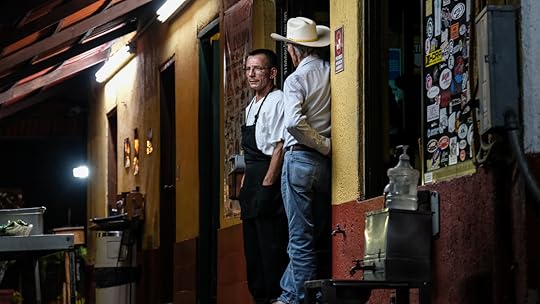
Velvia Film Emulation. Almost no noise at ISO3200
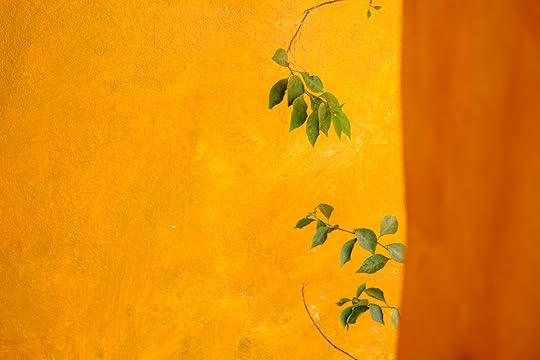
Velvia Film Emulation

Velvia Film Emulation
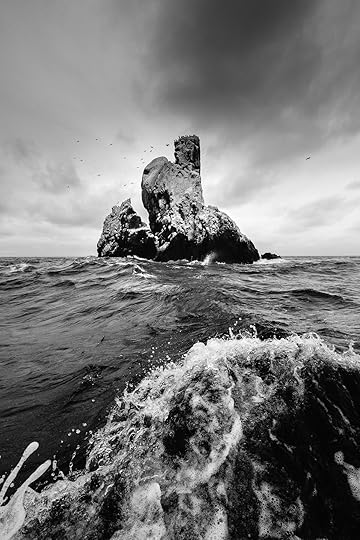
Shot with the Acros Film Emulation.
July 5, 2016
Within The Frame, 2nd Edition
Since 2009, Within The Frame has surpassed all kinds of expectations, among them my own. What started as a book about the passionate (and compassionate) photography of people, places, and culture, became a book that was just as much about vision. It led to other books, workshops, and connections with people that have since become collaborators and best friends.
Keep reading for your chance to win one of three signed copies of the new edition of Within The Frame, The Journey of Photographic Vision.
Now the 2nd Edition is out and I want to quickly tell you what it is and is not, and give you a chance to win a signed copy. What it is not is a whole new book. It’s not a chance for me to sell you a shinier version of something you’ve already got. It’s still Within The Frame. It’s still written by me. But the author has changed. I’ve grown. So this edition was a chance to re-edit the words and update some thoughts and opinions, and add a few things. The same is true of the photographs, all of which were re-processed, and some of which were replaced with new images entirely. There’s also a companion video that you can access with a link from the book, a chance to sit with me and talk about some photographs through the lens of the principles I discuss in the book.
I didn’t think I’d feel this way, the original being so close to my heart, but this edition is stronger and will represent my thoughts and teachings well for years to come.
If you already have the original edition there are good reasons to get the new one. You might want to support me. You might be curious. Your old copy might be falling apart. You might want to give a copy to a friend. But don’t do it if you think it’s a whole new book. It’s not, and I’d be disappointed if you bought the new edition thinking it was. This was a chance to update the book and present to the market again.
If you want to buy a copy, here’s a link to Amazon. I’d be thrilled if you shared it with others. And if you get a copy, I’d be grateful if you took a moment to leave a review for this new edition. If you loved this book, please consider helping me spread the word.
If you have a copy of the original, or you never got around to picking it up, and want a chance to win a signed copy of the new edition, leave your name in the comments here on the blog (make sure you enter your email in the email field – no one but me can see it, and I’ll need it to contact you if you win) – and in a week I’ll draw names and send signed copies to 3 of you. That’s it. Just let me know you’re in for the draw. You all have my deepest gratitude, thank you!
Share this Post, Share the Love!
June 27, 2016
Cameras Don’t Make Photographs.
The recent outrage over Steve McCurry’s penchant for tweaking his photographs with Photoshop is just one in a long series of opportunities for photographers to get their panties in a twist over how photography should or should not be done. This morning, I’ve about as much desire to enter the fray as I have to pour this mug of coffee into my lap. But I think we can do better, so here goes.
Its not about manipulating photographs. It never has been. It’s about manipulating others. No, I take it back. It’s not even about that. It’s about waking up and realizing we’ve been manipulated all along. And we feel betrayed.
Kids respond in all kinds of ways when they are told Santa isn’t real, and photography, as an art form, is in that awkward phase of growing up when suddenly we seem to be realizing what we should have known all along: Santa is just Dad in a bad costume. And this casts serious doubt on the integrity of the Tooth Fairy and Easter Bunny too.
Cameras don’t make photographs. They never did. But we were told they did. Worse, we were told – or willingly bought into the idea that – the camera never lied. And now we are finally coming to accept that it’s not the job of the camera to tell the truth. It’s our job. And it’s been that way since the beginning.
We put on one lens instead of another to include one thing and exclude others. We choose one moment over another. We choose what we focus on, and what we blur. The ways in which we can tell a story are endless, and each time the camera does what we ask of it. There is no internal moral compass that forces anyone to shoot a story from both sides, to include all the context we’ll ever need to interpret the story. There is no filter in Photoshop that prevents us from adding what was not there or removing what we wish had been absent. It does our bidding.
It has always been the role of the photographer to tell the truth. Yes, the truth as we see it, because that’s the best view of the truth on offer as human beings. Humans aren’t capable of seeing completely objective truth, so I’m not sure why we expect the camera to do that for us.
There is no one thing called photography, no one overarching reason we all do this, and no single way in which we do it. Like writers, some are journalists, some academics, some poets, and some humourists. We would never dream to accuse writers of changing words around to better tell the story they want. It’s a given. We don’t trust their pens or their keyboards to tell us the truth as best they can. We either trust, or do not trust, them. Humans tell stories, true or otherwise. Cameras do not. So that’s one thought. We feel let down when we find someone “used Photoshop.”
There is no process so pure that we will ever be free from manipulation. We enjoyed the illusion for a while. But now it’s time to grow up.
We all make photographs for different reasons. Specialty fields like journalism and forensics aside, there are no rules. There is no governing body. You are free to use or not use any technique you like. But you are not free to dictate how I or anyone else does what they do. Opine all you like. You won’t like my multiple exposures and I won’t like your Orton effect. Fine. Make all the rules you want, and apply them to yourself with as much severity as you choose, but accord to others the freedom to choose differently. Art made in submission to the rules of others is not art. It’s bondage.
We do not resonate with art because it is obedient. We resonate with art because it rings true and honest. And like the writer, I think it’s possible, even necessary, to remove elements of a story in order to make it better. It’s possible to add elements, use more colourful words, move things around to make the plot twist less noticeable. If I read your story and it doesn’t ring true, I’ll go back to reading Harry Potter. No one gets angry with J.K.Rowling when they find out there is no actual Hogwarts. Unless, perhaps, they’re seven years old.
It’s time we grew up and stopped buying the myth of a medium and a process that have intrinsic integrity. They are fundamentally flawed and limited (wondrous and full of possibility, too) – they are only tools in the hands of storytellers and artists. Some of those storytellers will tell us those stories honestly and some will not. It’s time we started taking responsibility for the stories we tell, and the way we tell them. And its time we took responsibility for choosing the stories and the storytellers we listen to.
I’ve seen the changes McCurry made to his photographs. They don’t bother me. We’re all arguing so vigorously over small tweaks that don’t change the message of the story that we’re forgetting to have a discussion about the story itself.
Because it’s way easier to argue about how a story is told than it is to be the one telling the story or to have something meaningful to say about the actual message.
This is not an article about McCurry or journalism. Please don’t fill the comments with your thoughts on journalistic ethics.* This is not about that. It’s about the way we bicker and opine over small things while missing the larger picture. It’s about the way we prescribe how others should do their art or tell their stories. It’s about our fondness for saying what “real” photography is or is not. It’s starting to sound a lot like kids arguing about what colour red Santa’s suit should be, or what his reindeer are called.
Make your photographs any damn way you please. Shock us. Surprise us. Use film, or shoot digitally. Embrace or eschew Photoshop, or whatever creative opportunities or constraints you wish to use in order to create your work.
You can clone things out and still create honest work in most contexts. And you can leave the clone tool alone and still tell vicious lies.
Photographs are made with various tools, but they are made by you and I. Whether they are honest or not is only secondary to a bigger question: are we?
Photography is, by it’s nature, a manipulation. It always has been. When we accept this we can move on to more interesting discussions and bigger stories; we can begin to think more critically about the stories we accept. When we stop asking “if it really looked like that” our craft will finally be able to move unhindered into art and we’ll be able to more freely perform our roles as artists and storytellers, constrained not by the rules and expectations of others but, for better or worse, by our humanity.
*Let me repeat again, because someone’s going to miss it: this is not about ethics in journalism. If (notice my choice of words here) Steve McCurry was bound to a set of ethics, and if he violated them, that is a different conversation. This is about accepting the fundamental nature of photography as a subjective medium, and about our opportunity to accept that subjectivity. If anything it is an argument to become more responsible with the stories we tell. But I believe that must include a discussion of the actual story, not just the way in which it is told.
June 18, 2016
Giant Mantas of Socorro
I boarded the Nautilus Belle Ami, with a couple dozen other divers on World Oceans Day. Together we spent the next 36 hours sailing from the southern tip of Mexico’s Baja Peninsula, bound for the Revillagigeda archipelago, a small collection of islands and rocky pinnacles a couple hundred miles south. The experience of the last 12 days was, in significant ways, the reason I’ve spent the last couple years chasing scuba and underwater photography so hard. Just before leaving I finished the last courses to qualify me for PADI’s Master Scuba Diver level, and my first dive on the trip was my one-hundredth dive. All to get me to the point where I could finally be face to face, in the wild, with sharks, dolphins, and – most of all – the giant oceanic manta ray.
Now sitting in Cabo San Lucas with a plate of chilaquiles con huevo and a margarita, a breakfast the likes of which I’ve not seen since they put whiskey on my oatmeal in Ireland, I’m thinking about the last two weeks and trying to brace myself for re-entry and a daily routine with email and Facebook instead of the endless blue of the pacific and the astonishing grace and curiosity of the mantas. Only my longing for my beautiful girl is pulling me home. I could stay here forever.
The giant manta ray has the largest brain of any fish in the ocean. Scientists speculate that this brain evolved not for survival – after all there’s very little in the way of complicated planning involved in eating plankton – but for social reasons. They are curious and highly relational, and in the case of the mantas at Socorro at least, they played almost endlessly with us. Dropping into the blue there would be nothing but the topography of rock on one side and around it, nothing but open ocean. And then suddenly she’d be there, flying in like a ghost. Jules Verne, in Twenty Thousand Leagues Under the Sea wrote that the ocean was “only movement, only love…it is the living infinite.” These words echoed in my mind, like a mantra, on each dive. I would only add the word grace.
The mantas would often come so close they would look me in the eye. I often forgot to take a breath, afraid to break the spell. What that probing obsidian eye saw, I don’t know. But I came close to tears a couple times staring into that eye and feeling the need to apologize for such barbarism towards them. Sharks and Rays are of the same family, and it’s estimated we kill over 100 million of them a year, a quarter of their species now facing extinction, the oceans now holding only 10% of what they once did. Because of our fear, and our greed, and our superstitions.
Of course, Jules Verne was wrong. It is not the living infinite. It seems so, because of it’s vastness. But it it’s as finite as anything on this planet, and perhaps more fragile. And we depend on it more than anything else. We empty it of fish, only to refill it with pollution, fish farms, plastics, and waste. The giant oceanic manta reproduces slowly, with gestation (usually only one pup at a time) lasting 13 months. We are killing them faster than they can reproduce.
Underwater photography is among the hardest things I’ve ever done. The first couple days of this journey I felt desperately like throwing in the towel. But I believe the discussion about this earth and the climate change we’re seeing will become the only conversation worth having because our survival will depend on it. The conversation will happen around the poles and in the oceans. So more that just an experience of a lifetime, that’s where I hope this is all leading me. To be a part of that conversation, if only the small part of the guy reminding others who hunger for beauty that this beauty is in such peril. The earth cannot sustain our appetites. 7 billion people looking out only for themselves and saying “I didn’t know” can’t be the reason we deplete this vast blue ball of all her beauty and mystery.
Face to face with beauty and grace – only movement, only love – it would be impossible for my photographs to do much more than hint at the mystery and grace I experienced. But I hope it gives you at least that. Soul-changing experiences like this – encounters that fundamentally re-calibrate us – don’t come often. But I suspect they’d be more common if we sought them. Paul Theroux said, “where there is wilderness, there is hope.” I long for him to be right.
I’m lousy at re-entry. It’ll take me a while to get back into the swing of things, post a new episode of Vision Is Better, and find my rhythm. It’ll come. And this week we’re having a huge sale at CraftAndVision.com – lots of free things, including the latest, and last, issue of PHOTOGRAPH Magazine – yours free. Make sure you’re on the mailing list (top left of the page at CraftAndVision.com) to get in on the deals.
Thanks for your patience with my absence. Enjoy the images. They’re a little rough because I’m on my laptop. Be sure to follow me on Instagram (davidduchemin) for more of them.
Share this Post, Share the Love.
May 30, 2016
Vision Is Better, Episodes 46-49
Join me for Episode 49, wherein I discuss the Fuji Instax Printer and the value of giving prints back to subjects. It’s been a while since I’ve updated you on the episodes, so for those of you that never get around to watching the show on YouTube, here are some links:
Episode 49, The One About the Pocket Printer
Episode 48, The One About Receiving Critique
Episode 47, The One About Giving Critique
Episode 46, The One About The Walrus Flipper
I’m heading to Mexico to photograph Great Hammerhead Sharks and Giant Mantas next week, but if you tune in on Monday I’ve got Episode 50 all lined up about the post-processing on one of my black and white images from last week’s trip with the grizzlies. As always, thanks for being part of this. If you’ve got ideas for episodes, or questions, post them in the comments. See you in a couple weeks!
Share this Post, Share the Love.
May 27, 2016
The Khutzeymateen in Black and White
I’m just now back from another spectacular four days near the British Columbia / Alaska border, in the Khutzeymateen Inlet. Four too-short days with grizzlies I’ve been photographing now for 4 years. Spring came early this year and the estuary was unusually green and lush, full of life. Unlike last year Air Canada this year saw fit to put my luggage on the same planes as I, so my clothing came with me. Different from previous trips however, this time I went with mirrorless gear – 2 Fuji X-T1 bodies, and a X-Pro2 body, and lenses from 16mm to 800mm (35mm equivalent reach) – and was blown away by how well they performed. The gear seems to get in my way less and less with every advance, allowing me to spend even less time considering it, and more time being attentive to the wilderness, the bears, and the moments. Interestingly, there were 4 photographers there and we all had Fuji gear – not a DSLR in sight (8 Fuji bodies between the 4 of us).
I decided to work in black and white this time, the greens so lush that it’s hard not to be swept away so much by the colour that you see almost nothing else. I also like the less literal approach. So much wildlife photography feels illustrative to me, and misses the larger opportunities to communicate emotion or tell a story. Black and white feels like a good way, at least to my eye and heart, to do that. The images here were shot in RAW then converted in SilverEfex Pro.
It’s a short blog post, but I wanted to share some initial images and say hello. I know many are curious about the transition to mirrorless from DSLRs and until now, with the coming of larger lenses and faster focus, I’d have still preferred my Nikons, but I was very happy with how well these cameras and lenses did their job, got out of the way, and let me do mine. Any questions, feel free to ask.
Share this Post, Share the Love.


